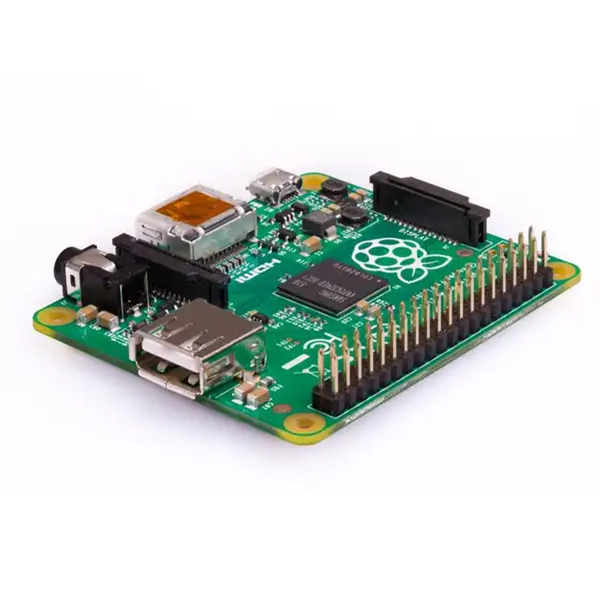Raspberry Pi 1 Model A+ is part of the original Raspberry Pi series, offering a more compact and less expensive option compared to its siblings. Here are some key details:

- Dimensions: The Model A+ is smaller than the original Raspberry Pi Model A, measuring 65mm x 56.5mm x 10mm, making it the smallest form factor in the Raspberry Pi 1 series.
- Processor: It uses the same Broadcom BCM2835 SoC as the Raspberry Pi 1 Model B+, featuring a 700MHz single-core ARM1176JZF-S CPU.
- Memory: It comes with 256MB of SDRAM, half of what the Model B+ offers, which reflects its positioning as a lower-cost alternative.
- I/O Interfaces:
- 40 GPIO pins (an upgrade from the 26 pins on the original Model A), providing more options for hardware projects.
- One HDMI port for video output.
- A USB 2.0 port (as opposed to two in the Model B+).
- A microSD slot for storage.
- A composite video and audio jack (via a 3.5mm jack).
- A CSI camera connector.
- Storage: Like other Raspberry Pi models, it uses a microSD card for the operating system and data storage.
- Power: It consumes less power than other models due to fewer components, typically requiring a 5V/2A power supply.
- Price: The Raspberry Pi 1 Model A+ was designed to be the most affordable Raspberry Pi, making it an attractive option for beginners, hobbyists, and educational use.
- Usage:
- Education: Its low cost and simplicity make it ideal for teaching basic computing concepts, electronics, and programming.
- DIY Projects: Perfect for small, low-power projects where cost and size are crucial, such as simple embedded systems, basic IoT devices, or learning about electronics and robotics.
- Embedded Systems: Due to its low power consumption and compact size, it can be used in various embedded applications where space and energy efficiency are important.
- Development: It’s useful for initial prototyping or when developing small, standalone applications.
Advantages
- Low Cost: The Model A+ was the cheapest Raspberry Pi model available, making it accessible to a wider audience.
- Compact Size: Its small footprint allows for easy integration into various projects where space is at a premium.
- Low Power Consumption: Useful for battery-powered or energy-efficient applications.
Limitations:
- Limited Memory: With only 256MB of RAM, it’s less capable of handling memory-intensive tasks compared to higher models.
- Single USB Port: Only having one USB port limits the number of peripherals you can connect directly to the board.
- Performance: The single-core CPU at 700MHz is less powerful than later Raspberry Pi models, which might limit its use in more demanding applications.
The Raspberry Pi 1 Model A+ was intended to provide an entry-level option for those interested in exploring computing, electronics, and programming at a minimal cost. While it lacks some of the features of its more advanced siblings, its simplicity and affordability have made it a popular choice for educational purposes, simple projects, and as a stepping stone for beginners in the world of DIY electronics and computing.
Compliance
The Raspberry Pi 1 Model A+ has undergone extensive compliance testing, and meets the following European standards:
- Electromagnetic Compatibility Directive (EMC) 2014/30/EU
- Restriction of Hazardous Substances (RoHS) Directive 2011/65/EU
View and download global compliance certificates for Raspberry Pi products.
The Adopted Trademarks HDMI®, HDMI High-Definition Multimedia Interface, and the HDMI Logo are trademarks or registered trademarks of HDMI Licensing Administrator, Inc. in the United States and other countries.
